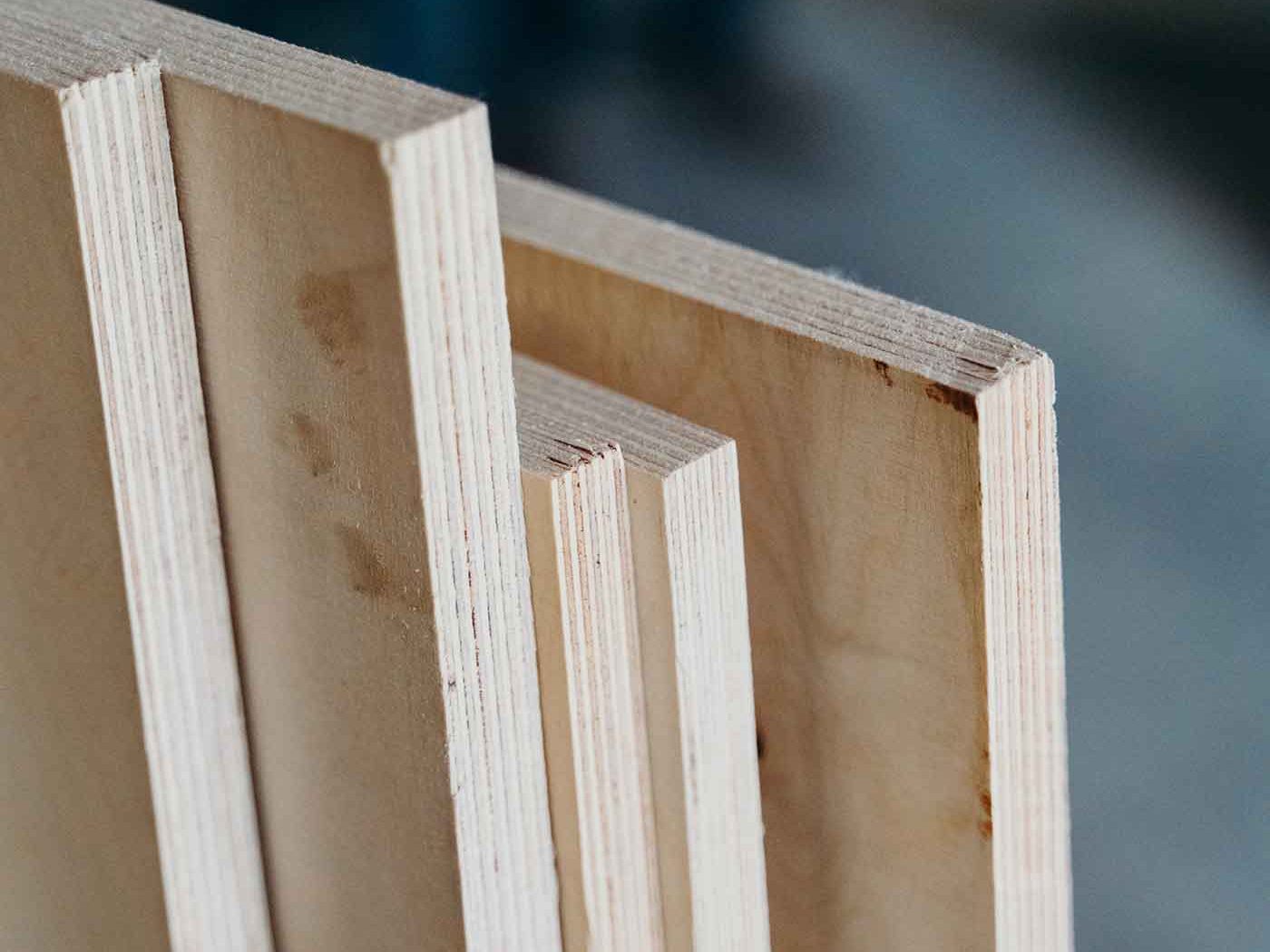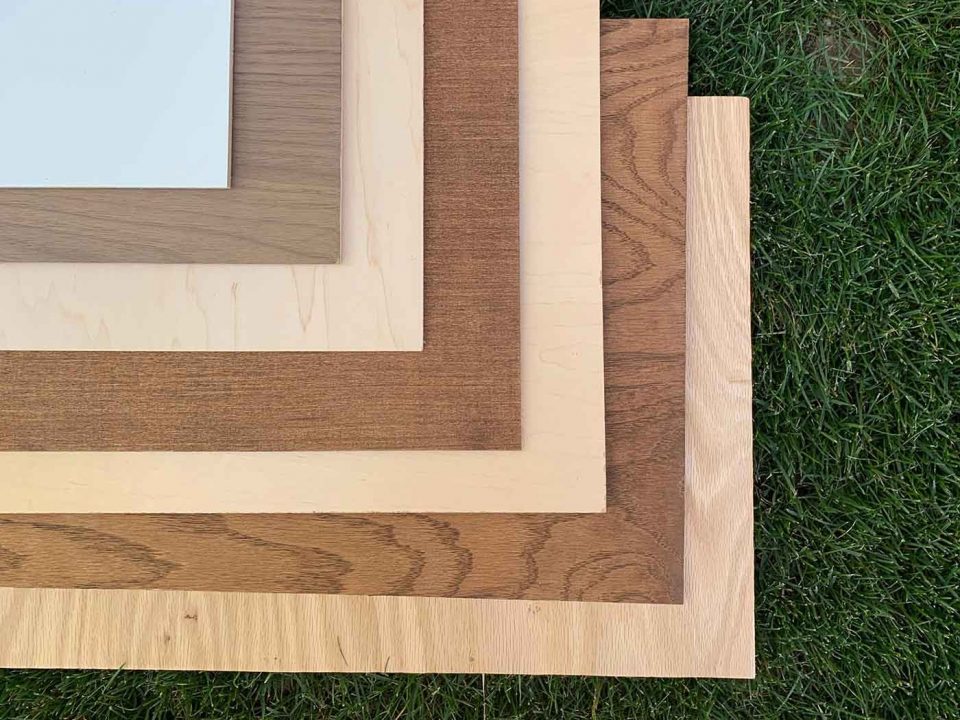We work a lot with reclaimed materials and plywood is no exception. We don’t shun this valuable material. Sure it’s not perfect for everything but it’s a great building material, dimensionally stable. It’s good to have an understanding on what the different types of plywood grades are and how they can be used in your projects.
What are the Cores in Plywood?
Plywood is made of up layers of materials. Often glued up perpindicular to each layer. This process allows for a strong and stable material.
- Veneer Core Plywood. This is the typical plywood you see in the big box stores. It’s made of layers of wood veneers bonded together. It’s very strong and versatile. There are a variety of types of veneer core plywood. See below for the different types.
- MDF Core: Is a sandwich of wood veneers with a layer of MDF or Medium density fiberboard, in the center. This has a more consistent thickness.
- Lumber Core Plywood: As the name suggests, it has a layer of solid wood in the middle with the exterior veneers. The reason for this is to have the look of more expensive wood without the cost.
- Particleboard Core Plywood: Just like MDF core plywood, particleboard core panels have front and back veneers glued to the core. It has good thickness tolerances but doesn’t have the screw-holding strength. It is the least expensive off all the cores

What are the Different Types of Plywood?
As with the different cores of plywood, there are different types for different uses and applications. Some are used for construction, some are used for furniture and some are used in marine applications.
- Exterior Sheathing Plywood: Rated CDX. The “C” rating is for the face, “D” is the rating for the back, and “X” is for exposure. This is often used in roof sheathing. While used for the exterior building elements, it does need to be covered with a more weather proof material.
- Subfloor Plywood: Typically waterproof, has fewer but thicker layers. Tongue and groove plywood provides a squeak-free floor.
- Decorative hardwood plywood: Is made up of 3 or more thin piles of hardwood (ie. Red Oak). The grain of each ply is oriented perpendicular to each layer. The cores can be MDF, Particleboard, or veneers. The typical uses of decorative hardwood plywood is for cabinets, furniture and mill-work.
- Marine Plywood: Made from veneers with few defects. It performs better in humid and wet conditions. It’s typically made from the same species of wood. It uses exterior glue that resists water.
- Russian/Baltic Birch Plywood: Light in color, it uses more layers than standard plywood. It has a very uniform grain and is extremely durable. The inner layers are oriented perpendicular to one another for good strength and resistance to warping.

What are the Different Plywood Grades?
There are four types of plywood grades A, B, C, D,. These letters refer to the quality and the appearance of the exterior veneers. These grades can be the same on both sides or different from front to back. You can have an A/B grade or A/A grade.
- Grade A: The veneer is nearly free of defects, with little to no knots. It has a very smooth sanded surface and is meant to be seen. It’s the most expensive of the grades
- Grade B: The veneer may have a few open defects. Splits, joints, bark pockets will be repaired with color-matched, oval shaped patches. Often used for a clean painted finish.
- Grade C: Some open defects are allowed to a certain number per sheet. This will be different depending on the face or back. Unlimited amount of patches and sound knots are allowed.
- Grade D: More defects are allowed than C grade. Unlimited amount of patches and sound knots are allowed. Both C and D are used where the visual appearance isn’t important.
Having a simple understanding of the types and grades of plywood will help make a better decision in your projects.

